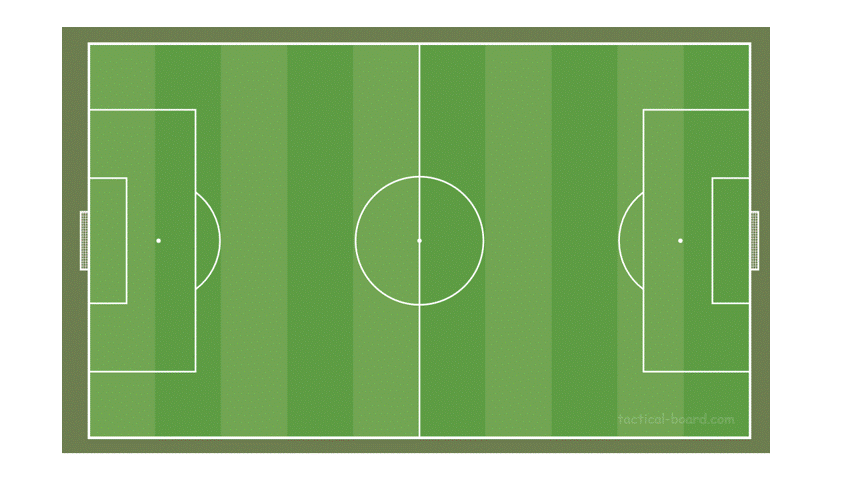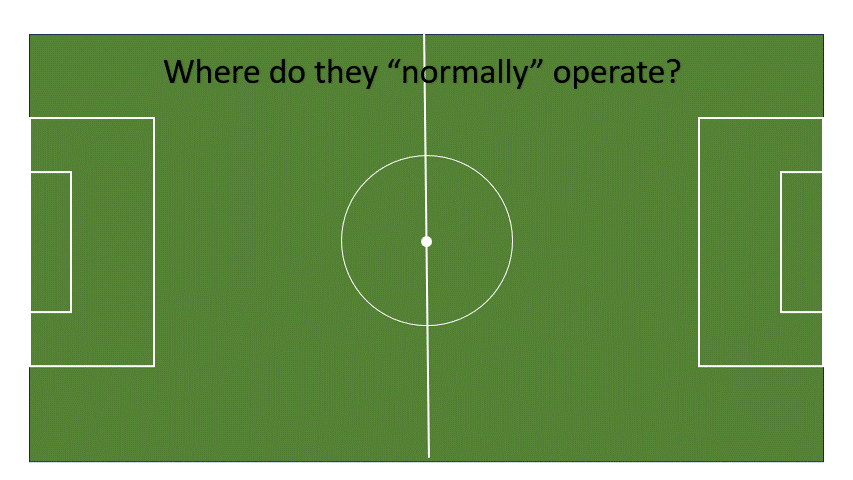A Simple Guide to Central Midfielder Playmakers
The central midfielder playmaker is a pivotal role in football, orchestrating the game’s tempo, distributing key passes, and offering strategic depth to the team’s formation. Understanding the nuances of this role can significantly enhance a team’s performance on the pitch. This guide delves into the main central midfielder positions, their duties, positioning, compatible roles, and ideas for building a tactical system around each.
Main Central Midfielder Positions

Deep-Lying Playmaker
The deep-lying playmaker operates closer to the defensive line, often acting as a bridge between the defense and the attack. This role focuses on controlling the game’s pace, recycling possession, and initiating attacks from a deeper position on the field.
Roaming Playmaker
A roaming playmaker has the freedom to move across the pitch to find space and create opportunities. This player combines the qualities of a traditional playmaker with the energy and movement to influence the game in both defense and attack.
Advanced Playmaker
Positioned closer to the opposition’s goal, the advanced playmaker acts as the creative spark in the final third. This role focuses on unlocking defenses with incisive passes, dribbles, and occasionally contributing goals.
Roles and Duties
Deep-Lying Playmaker
- Support: Offers a passing option to retain possession and helps transition the ball from defense to attack.
- Defense: Assists in ball recovery and shields the defensive line.
Roaming Playmaker
- Support: Provides dynamism in midfield, constantly offering passing options.
Advanced Playmaker
- Attack: Focuses on creating scoring opportunities through creative passing and dribbling.
- Support: Links play between midfield and attack, dropping deeper if necessary to collect the ball.
Positioning / Movement

Deep-Lying Playmaker
- Starting Position: Near the center circle, often behind other midfielders.
- Movement: Stays deeper during attacks but may push forward slightly in possession. Defensively, positions themselves in front of the backline.
Roaming Playmaker
- Starting Position: Central midfield but with freedom to move.
- Movement: Constantly shifts across the pitch, finding spaces in attack and contributing defensively across the field.
Advanced Playmaker
- Starting Position: Between midfield and the opposition’s penalty area.
- Movement: Primarily operates in the final third but may drift wide or drop deeper to influence play.
Compatible Roles
Deep-Lying Playmaker
Pairs well with a box-to-box midfielder or a ball-winning midfielder, offering a blend of creativity and defensive solidity.
Roaming Playmaker
Benefits from the presence of a defensive midfielder behind them, allowing them to roam freely without compromising the team’s defensive structure.
Advanced Playmaker
A striker or a false nine can complement the advanced playmaker, providing an outlet for their creativity and drawing defenders away to create space.
Building a Tactical System
Deep-Lying Playmaker
Build a system that prioritizes ball retention and gradual buildup, with the deep-lying playmaker acting as the pivot. Ensure defensive coverage to allow them to focus on distribution.
Roaming Playmaker
Utilize a flexible formation that adapts to the roaming playmaker’s movements, ensuring balance in midfield. Encourage overlapping runs from full-backs or wingers to exploit the spaces created.
Advanced Playmaker
Designate the advanced playmaker as the primary creative outlet in a system that focuses on attacking play. Surround them with mobile forwards and wingers to maximize the effectiveness of their playmaking abilities.
If you chose to use them, central midfielder playmakers can be crucial for dictating the flow and outcome of a game. By understanding each role’s unique attributes and responsibilities, managers can devise tactical systems that leverage their playmakers’ strengths, thereby enhancing their team’s performance in FM.


